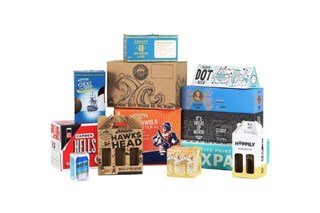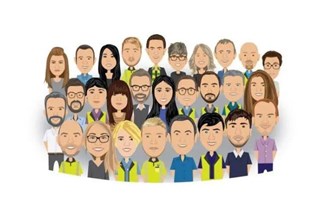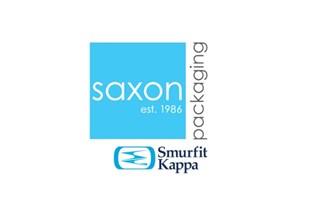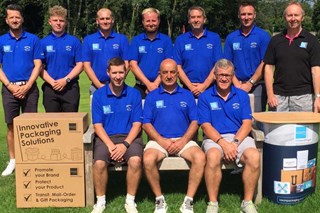Component "Sub Navigation" has no content
QR Code revival by NHS Covid-19 app creates opportunity for packaging design
The long-awaited NHS Covid-19 app launched on Thursday 24th September to help track and trace, and ultimately help stop the spread of coronavirus (Covid-19); and with that has brought the revival of the QR Code.
What is a QR Code?
QR (Quick Response) codes have been around since the early 90’s originating in the automotive industry, being first used by the Japanese company Denso Wave. It is a two dimensional barcode consisting of black squares arranged in a square grid, which can be read by most smartphone cameras and QR reading apps.
They initially served purpose to contain data for a locator, identifier, or tracker to point to a website or application. It provided a contactless and simple solution to transferring data without the use of cables or other complicated methods and saw a rapid rise in popularity. The QR code evolved to serve many uses, including product tracking, item identification, mobile payment, joining Wi-Fi and brand marketing.
Whilst QR codes have been humbly performing their duty over a quarter of a century, in recent years it has felt a stunt in growth with consumer popularity. This was predominantly due to smartphone operating systems unable to offer a fully integrated solution: Until 2016, it was necessary for smartphone users to download a standalone app to be able to read the QR codes using their phones (presenting much unwanted conflict for a tool designed for the sole purpose of being quick and easy to use).
A New Era for QR Codes
This could all change with the recent roll out of the NHS Coronavirus contract-tracking app. As venues are now mandated to display QR codes on the entry to their premises, visitors are being asked to scan the code upon arrival using the ‘NHS COVID-19’ app, with the intent to help trace and stop the spread of coronavirus.
The QR codes provide a simple, quick and contact-free solution to the track-and-trace procedures for business premises across the UK, and also encourage accurate data being given by the public.
Although it is not mandatory to digitally ‘check-in’ (venues must also offer a paper service), QR codes will be displayed prominently for every person wishing to enter the premises. With consumers being continually exposed to this technology, we will naturally see UK citizens quickly adopt the practice of scanning QR codes into their daily lives.
This new habit of scanning with smartphones will no doubt have an impact on the packaging industry as brands quickly learn to take advantage of the rapid QR code resurrection with UK consumers.
The coronavirus pandemic has seen a surge in the growth for direct-to-consumer retailing, with many brands adapting their business models to react to the prolonged closures of their brick-and-mortar stores and using eCommerce & subscription as a way to continue getting products into the hands of their consumers. Packaging has always been (and continues to be) an essential part of this customer journey.
Technology also plays a key role in every aspect of the journey the consumer has with a brand. It is now easily possible to integrate technology within the design elements of packaging, encouraging interaction between consumer and brand. We have witnessed many companies building in the QR code to their own packaging in much cleverer ways than traditionally used; examples include Coca-Cola and Amazon.
With an array of print capabilities and additional print finishes, packaging is now more exciting than ever before and truly being used as a mutual platform between consumer and brand. Packaging has always been a sensory and visual element, and now with the incorporation of the QR code can become something more; a way to interact, build relationships, offer additional value, educate the consumer – its opportunities are endless.
To find out more about what packaging is best for you, contact Saxon Packaging on 01502 513112 or submit an enquiry via our contact form.








